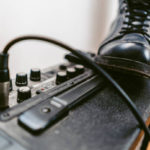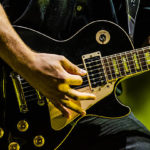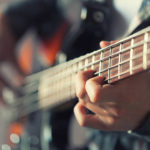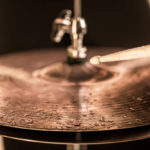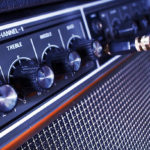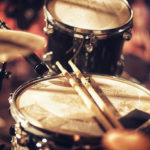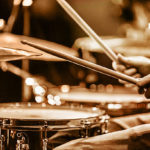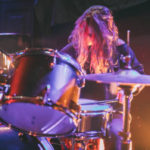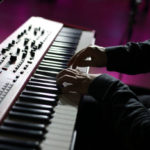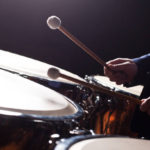Rock Blues Genre
Rock Blues is an enthralling musical blend that combines the timeless charm of blues with the energetic essence of rock music. This distinctive genre is known for its dynamic ensemble, featuring instruments reminiscent of both electric blues and rock, including the guitar, bass guitar, and drums. In addition, keyboards and harmonica enrich the sonic experience, adding depth and texture to the music.
Having evolved since the mid-1960s, rock blues has undergone various stylistic shifts, constantly pushing the boundaries of musical creativity. It has served as a wellspring of inspiration for other genres, leaving a lasting influence on hard rock, Southern rock, and the emerging heavy metal scene. Notably, it continues to thrive as a vibrant form of expression, with electrifying performances and captivating recordings by esteemed contemporary artists.
The Rock Blues Sound
Discover the mesmerizing allure of the rock blues sound, brought to life by the electric guitar, bass guitar, and drums. Delight in the amplified magic of the electric guitar, resonating through cutting-edge tube amplifiers or dynamic overdrive effects. Experience the synergy of dual guitars, with one expertly crafting rhythmic riffs and chords while the other masterfully weaves melodic lines and soul-stirring solos.
In its early days, the rock blues scene saw the occasional use of the upright bass in the 1950s, swiftly transitioning to the electrifying presence of the easily amplified electric bass in the 1960s. Revel in the occasional harmonious touch of keyboard instruments like the piano and Hammond organ, electrified to perfection through powerful tube amplifiers, infusing an edgy “overdrive” quality to their timeless tunes.
Witness the pivotal role of vocals in the rock blues ensemble, either standing in harmony with the lead guitar or gracefully taking a supporting role. Explore the instrumental-only masterpieces that transport you to a realm of pure musical ecstasy. Get lost in the melodic charm of the Richter-tuned harmonica, affectionately known as the “harp,” occasionally gracing the soulful soundscape of rock blues bands.
To Sum It Up - The Rock Blues Band Composition
Immerse yourself in the soulful world of Rock Blues. Discover the dynamic synergy of instruments and vocals that define this iconic genre:
Electric Guitar: Feel the pulse of rock blues with the iconic electric guitar. Generating those signature bluesy tones, it’s the heartbeat of the music. Some bands feature dual guitarists, one crafting rhythmic chords and riffs, while the other delivers captivating solos.
Bass Guitar: Grounded in the low-end magic, the bass guitar provides the rock blues foundation. From the classic upright basses of the 50s to the electric bass guitars of the 60s, it’s the backbone of the groovy sound.
Drums: Unleash the infectious rhythm with the drums. From the thump of the kick drum to the shimmer of the cymbals, the drummer sets the pace and drives the energy of the music.
Keyboard Instruments: Experience the depth of sound with keyboards like the piano and the Hammond organ. Amplified through tube amplifiers, they add a growling, textured quality to the music, enriching the sonic experience.
Vocals: Dive into the emotional journey of rock blues vocals. Whether they take the spotlight or intertwine with the guitar, vocals convey raw storytelling and depth, enhancing the overall impact of the music.
Harmonica (“Harp”): Feel the soulful touch of the Richter-tuned harmonica, the “harp.” With its bluesy wails and melodic contributions, it weaves a distinctive, heartfelt element into the music, both as a solo instrument and a complementary voice in vocal-driven tracks.
While rock blues bands may experiment with different instruments, the core remains constant. The electric guitar, bass guitar, drums, and vocals create the timeless sound that has enthralled audiences for generations. Experience the essence of rock blues and let the music take you on a journey.
Women as members of a Rock Blues Band
Discover the changing tides of popular music! While women have long graced the forefront as vocal powerhouses, their instrumental prowess in rock and blues, particularly in subgenres like heavy metal, has historically been rare. Rock and blues bands have predominantly been a male-centric sphere, entrenched in exclusive social circles, limiting female participation.
Furthermore, rock music has often been depicted as a symbol of male defiance, contrasting a perceived female-dominated domestic culture. This perception confined women to passive roles as consumers of manufactured pop music, denying them access to esteemed positions in the rock blues scene.
However, times are changing, with gradual shifts in societal dynamics. Notably, pioneering women like Suzi Quatro have shattered barriers, carving out successful careers as singers and musicians within rock bands. Quatro’s trailblazing journey, starting in 1973, marked a significant stride in the transformation of this once male-dominated realm. Explore the new era of women in music today!
Rock Band Gallery
The Mix...
Clearly, the lead singer performs lyrical vocal phrases featuring repeated patterns (see The Form). Moreover, the lead Electric Guitar plays Strong Guitar Riffs based on short sections of the main melody.
The Form...
Here, the Verse-Chorus-Verse form with a short Introduction (often instrumental but sometimes vocal) is utilized. Thus, Solo verses, chorus, the instrumental section ends with a Coda/Outro — the rock blues form.
Instrumentation...
In particular, no “setlist” of instruments is made. However, instruments often featured are:
- Guitars (Acoustic, Electric, and Bass)
- Drum Kit
- Vocals (Lead and Backing Singers – often called BVOX)
- Piano, Electric Piano
- Saxophone and Strings – either live orchestral or synthesized “Lush String Pads” using Music Technology.
In Conclusion...
The basis of a Rock Blues Band’s gears and instruments, are a Lead Singer, Drum Kit, and Trio of Guitars. In addition, Lead Electric Guitar, Rhythm Guitar, and Bass Guitar. Interestingly, the sound of Rock Music centers upon the Electric Guitar. In fact, sometimes a Piano, Hammond Organ, Electric Keyboard/Synthesizer or Strings may be added or other (often strange!) timbres and effects!
